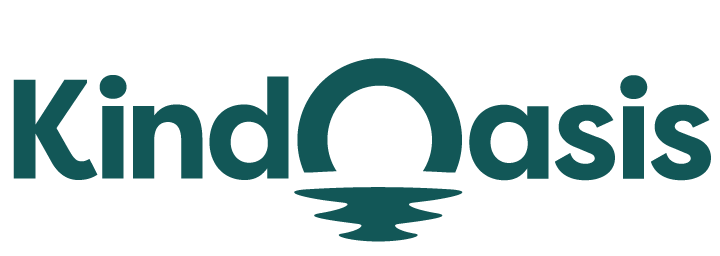How To Calculate Profit on Shopify?
Try AI ChatbotLearn how to calculate profit on Shopify with key metrics, tools, and tips to boost your store's profitability.

Calculating profit is a crucial aspect of running a successful Shopify store. Understanding how to track your revenue, expenses, and profit margins allows you to make informed business decisions, optimize pricing, and improve overall profitability. In this article, we will walk you through how to calculate profit on Shopify, covering key metrics such as revenue, cost of goods sold (COGS), and profit margins. We will also highlight the best tools available, such as Shopify’s built-in profit margin calculator, to help streamline the process. For a deeper dive into profit tracking, check out Shopify's official guide on net profit margins.
Understanding Key Profit Metrics
Before diving into calculations, it’s important to understand the basic metrics involved in calculating profit on Shopify:
- Revenue: The total amount earned from selling products or services.
- Cost of Goods Sold (COGS): The direct costs associated with producing or purchasing the products you sell, including materials, labor, and shipping.
- Gross Profit: Calculated by subtracting COGS from total revenue. It shows how much profit you're making after covering product costs.
- Operating Expenses: The ongoing costs required to run your business, such as marketing, software subscriptions, and payroll.
- Net Profit: The amount left after all expenses (COGS + operating expenses) are deducted from revenue.
To make this process easier, Shopify offers a profit margin calculator that helps you quickly determine your gross and net profit margins based on these inputs.
Step-by-Step Guide: Calculating Profit on Shopify
1. Track Your Revenue
The first step in calculating your profit is to track your store’s revenue. This includes all sales generated through Shopify, whether from products, services, or subscriptions. Shopify’s admin dashboard provides detailed sales reports, which you can access through the “Analytics” section. You can view your store’s gross sales, refunds, discounts, and net sales to get an accurate picture of your total revenue.
2. Calculate Cost of Goods Sold (COGS)
Next, you’ll need to calculate your cost of goods sold (COGS). This metric includes the costs associated with producing your products or purchasing them from a supplier. To calculate COGS, include expenses such as:
- Raw materials or wholesale product costs
- Shipping fees to your warehouse or fulfillment center
- Labor costs associated with producing the product
- Packaging materials
Subtract your COGS from your total revenue to determine your gross profit. For a more automated solution, Shopify provides a profit report%20is%2040%25.&text=The%20total%20profit%20made%20on,the%20cost%20from%20net%20sales.) that allows you to view your gross profit margins in real-time.
3. Factor in Operating Expenses
After calculating your gross profit, it’s important to consider your operating expenses. These include costs such as:
- Marketing and advertising expenses
- Shopify subscription fees or app costs
- Employee salaries or contractor payments
- Shipping and fulfillment fees
- Software subscriptions and tools
Once you’ve added up your operating expenses, subtract them from your gross profit to get your net profit. This figure represents your business's overall profitability.
4. Use Shopify’s Profit Margin Calculator
One of the best tools available to Shopify store owners is the Shopify Profit Margin Calculator. This tool allows you to quickly calculate your profit margin by inputting your selling price and COGS. It automatically calculates your gross profit and gross profit margin, giving you valuable insights into your pricing strategy. For more detailed guidance on how to use this tool, read Shopify's step-by-step tutorial.
Best Shopify Profit Calculators in 2024
If you’re looking for the best tools to simplify profit calculations, Shopify’s native tools are top-tier, but there are other great options available too:
- Shopify’s Built-in Reports: These offer detailed insights into sales, COGS, and profit margins, helping you track profitability over time. Explore Shopify’s profit report tools.
- Third-Party Apps: Some apps offer advanced features like multi-channel sales tracking, expense management, and detailed financial reporting. Popular apps include QuickBooks Online, Xero, and Bench.
- Retail Profit Margin Calculator: If you operate both online and physical stores, Shopify’s retail profit margin calculator is an essential tool to ensure consistent pricing and profitability across different sales channels.
Enhancing Your Shopify Store with VanChat
As you optimize your store’s profitability, consider integrating tools that not only automate your sales process but also enhance customer engagement. VanChat is an AI-powered pre-sales chatbot designed for Shopify, helping store owners boost conversion rates while reducing the burden of manual customer interactions. By automating up to 97% of common inquiries—such as product availability, pricing, and shipping—VanChat saves you valuable time that can be redirected toward managing and analyzing your store’s profitability.
How VanChat Boosts Sales and Profitability
VanChat does more than just answer customer questions. It actively drives sales by recommending products, answering personalized queries, and even offering discount reminders—all based on customer behavior. This level of interaction leads to higher conversion rates, which directly impacts your store’s revenue. VanChat’s ability to streamline the pre-sales process allows you to focus on optimizing other areas of your store, such as pricing and product selection, to maximize profit. For more information on how VanChat can improve your Shopify store’s profitability, check out this step-by-step guide.
Conclusion
Calculating profit on Shopify is vital for making informed decisions about pricing, inventory, and expenses. By following the steps outlined above—tracking revenue, calculating COGS, and factoring in operating expenses—you can get a clear picture of your store’s financial health. Utilizing tools like Shopify’s profit margin calculator and integrating solutions like VanChat will streamline your processes, helping you achieve better profitability and efficiency. Stay proactive in monitoring your profits to ensure sustained growth and success.





